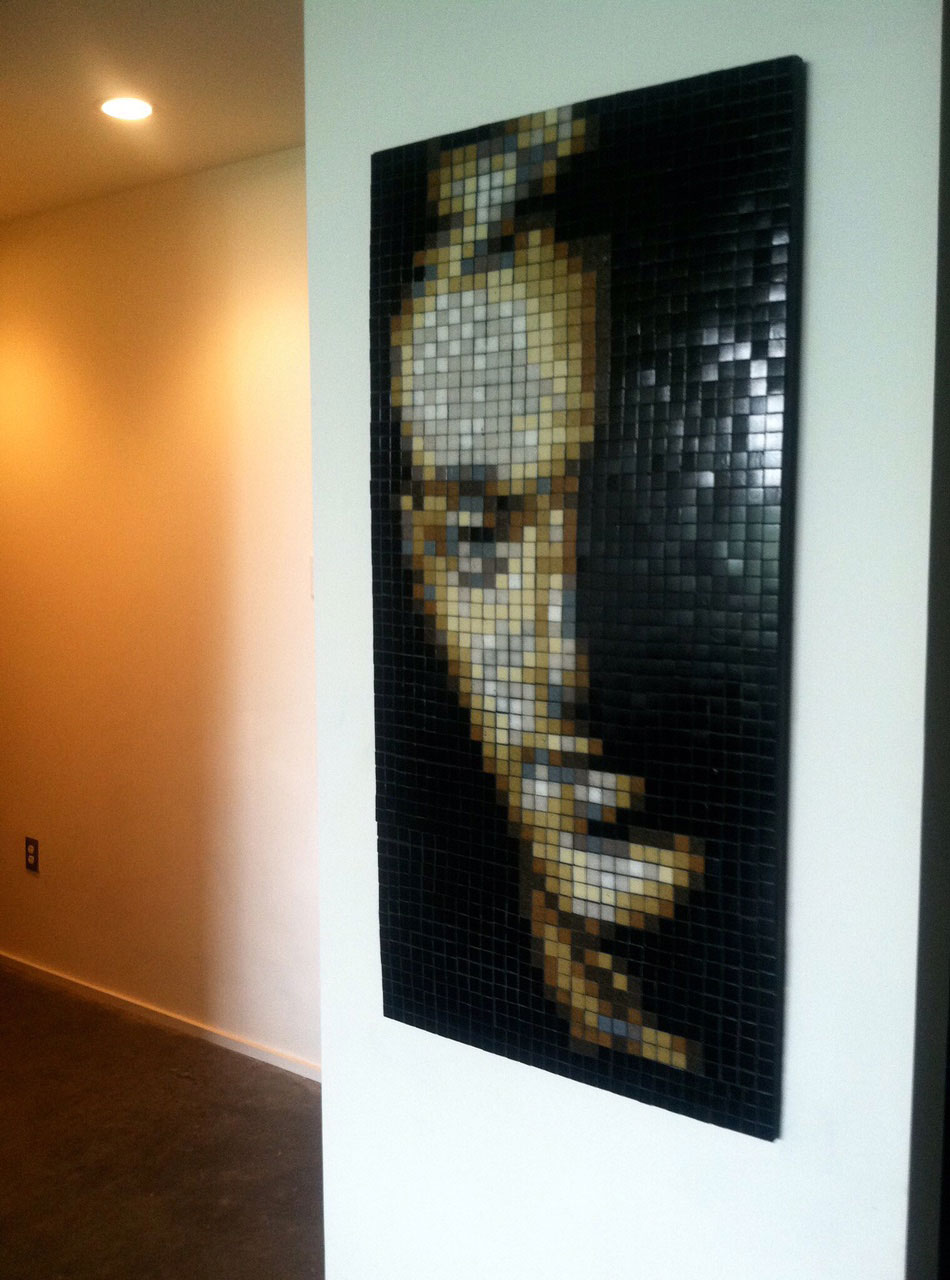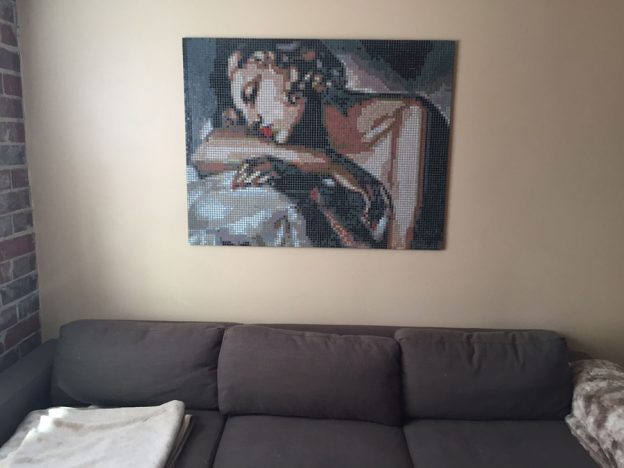Figurative mosaic art (mosaic pictures) can be used as an element of interior design in the same way that paintings are used. The only difference is that a stronger, more secure way of mounting the artwork to the wall is needed.
Natalija wrote an article about using a French cleat mounting system to securely hang a mosaic if you need more information about how to do that, and I discuss some concerns about using picture wire toward the end of this article, but first I want to talk about aesthetic considerations and how to make sure a mosaic looks right in a room.
Art To Match The Sofa
All artists think of the piece of art they are currently working on as its own little world because it is. Art is an escape from all the banal concerns of ordinary life, and serious artists are desperately striving to create something that is above and beyond in some way, if only in terms of the artist’s emotional input. For these reasons, many artists (including myself) find it unbearable to interact with buyers who think of the art as just another object to decorate their living room. “Art to match the sofa,”
Rooms As Art
But once you become the interior designer, the room itself becomes the art, and you want to harmonize the elements in it the same way a painter strives to make the shapes and colors in a painting harmonious. For that reason, it doesn’t matter how great a work of art is if it isn’t right for the room because of either its colors or composition or theme.
Designers are often hired to create rooms to match the color scheme of paintings (or the upholstery of a favorite piece of furniture). In fact, paintings and fabric patterns can be thought of as “cheat sheets” that show a color scheme that already works. Why not use them as a blueprint for a room’s design?
Look at the above photo of David Armstrong‘s mosaic interpretation of the Tamara De Lempicka’s painting “The Sleeper.” Note the colors in the room: the earth reds of the exposed brick, the gray of the sofa, and the cream paint of the wall. Notice how these are the same colors used in the painting and how well it makes the room work as a whole. The painting is at home there because of this harmony.
All that being said, it is possible to use brightly colored paintings to brighten otherwise drab rooms, but there still needs to be harmony of sorts in the sense that no colors in the painting clash with colors in the room.

How Not To Hang A Mosaic
Mosaics are much heavier than paintings, which means they can injure someone or be seriously damaged if they were to fall from a wall. That means you can’t just hammer a tiny finish nail into the drywall and use picture wire on the back of the mosaic.
Picture Wire On Steroids
I think the French cleat method explained in Natalija’s article is neater and stronger and more reliable than using picture wire.
If you are determined to use wire to hang it like a painting, you could, but the wire needs to be heavy gauge picture hanging wire, and the ends need to be twisted thoroughly. Also, the hanging nail or screw needs to be heavier gauge, and it needs to be sunk into a stud inside the wall.
The picture wire needs to be securely attached to the back of the mosaic. Keep in mind that tiny eye screws can pull out of wooden frames and backers, and adhesives age and fail over the years.
For this reason, you would need redundant wires on the back, and each of these wires should have redundant points of attachment to the backer, something stronger than small gauge eye screws.
The “heavy gauge” picture hanging d-loops sold by the big-box building material stores failed when we used them once, and we were well below the weight rating.
Use wood screws or deck screws, and sink them into boards glued flatly on the back of your mosaic backer, or use a well made hardwood frame, reinforced if needed at the corners with triangles of plywood on the back.


Leave a Reply